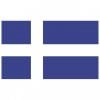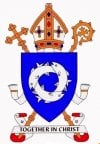Finding Mary Nicolson
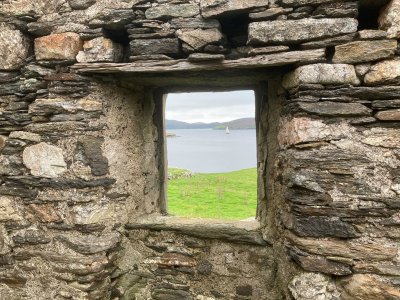
Mary Nicolson was born in a croft on the shore of Aith Voe sometime around 1780. The ruins of the building are still to be seen at Queensetter and the photograph shows a view she must have been familiar with as a child, looking across the sea to the island of Papa Little. Her brother, John Nicolson, is remembered in Shetland as one of the pioneers of the Methodist church in Shetland and his achievements are listed on his gravestone in Gruting.
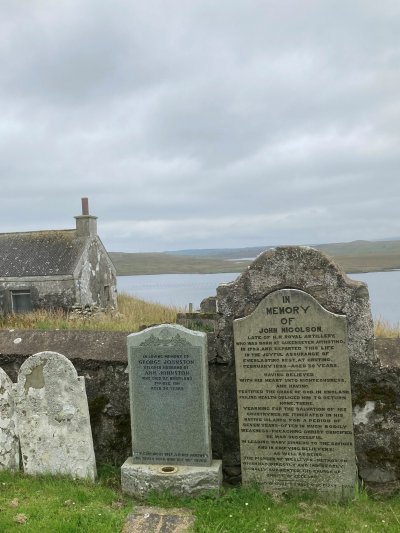
Mary had a much quieter life as the wife of a fisherman. She could have passed from this world almost completely unknown but for a strange episode two months before her death, which was celebrated by Catholics as a sign of God's loving Providence and by contemporary Protestants as a sign of Popish trickery. An account published in the Northern Ensign newspaper on 14th July 1861 was picked up by "The Bulwark or Reformation Journal" on 2nd September 1861 and given national circulation, complete now with an imaginative reconstruction drawing. Despite the anti-Catholic tone, the account is a valuable account since it comes from the testimony of Mary's son, an eye witness.

The account describes a journey by three men from Lerwick to South Delting, a distance of 19 or 20 miles. Only one of them is identified - Martin Flynn, an Irishman, who was well known in Shetland. Their object was to meet with Mary Nicolson and a woman had been sent ahead a day or two before to find out if Mary would be well enough to receive them. One of the group was introduced as a "Dutch Doctor", and the party gained admission to the house on the understanding they could give medical advice.
[The Dutch Doctor] "then proceeded to examine the patient, feeling her pulse, lifting up her eyelid, looking very grave, &c. He then took out a little bottle containing some liquid, which on being uncorked diffused a sweet odour. He applied it to her nostrils and otherwise, going through a number of other motions, which they did not well follow him in. He also said his companion was a minister, and that if they were agreeable he would pray. Assent was readily given, as the thought had not yet struck them that he might be a Romish priest. The Doctor and he spoke to each other a good deal in some foreign language - it might be Latin. The minister took out a small book, and read in an indistinct under-tone a good deal from it, but nothing of what he said was understood, or could even be distinctly heard by those present. They tried to get the sick woman to converse with them; but, being prostrated by paralysis, she could get almost nothing intelligibly uttered, except yes or no. They asked if she would be glad to see the priest? She said yes. The Doctor told her this was one. The people of the house were horrified at this disclosure, but they could not now help themselves. The scent bottle had already been applied ad libitum, and the whole was, it seems, accomplished - baptism, extreme unction, and salvation. The Doctor insisted that they should remain by her for the night. This could not be conceded. The house was not such as that gentlemen such as they could be accommodated in it. "Oh, no," they said, "we can remain perfectly well." Mary's son, however, was resolved that out they must go, even if force should be requisite. They at length asked to be conveyed by boat northwards, and I think the young man said they took them by boat to Olnafirth."
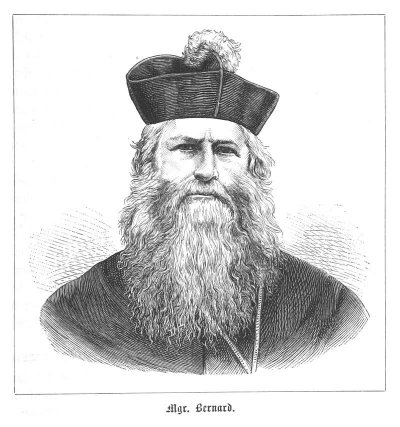
We have an account of the reception into the Church of Mary Nicolson also from the Catholic side. Fr Etienne Djunkowsky, Prefect Apostolic of the North Pole Mission, had arrived in Lerwick on 30th September 1860 and celebrated Mass that same day in the Zetland Hotel in Commercial Street. It was probably the first Mass in Shetland since the Reformation. Djunkowsky had travelled with Dr Olafur Gunlogson, an Icelander who had been resident in Belgium before attaching himself to the North Sea Mission, and on 7th October had been joined by Fr Bernard Bernard and Fr Theophilus Verstraeten. The unnamed priest in the dialogue was Fr Bernard Bernard. He gave his own description of events in a letter to Rev. X. Ciamberlani, Belgian Procurator of the North Pole Mission, sent from Lerwick on the 14th October 1860 and published in Brussels in 1861.
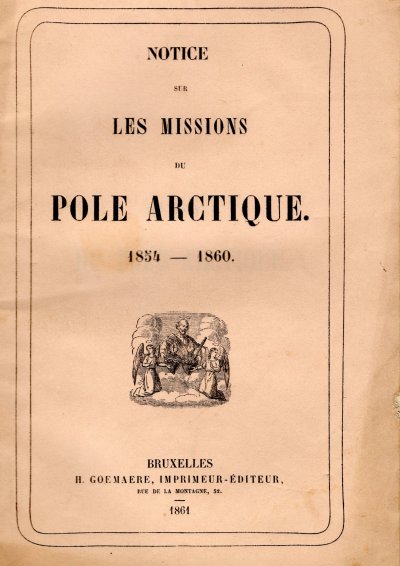
About eighty years before the time of writing, a married couple who were without children had prayed ardently for a child. They were Protestants but had none the less maintained respect for ancient Catholic traditions. They promised God that if he gave them a child they would name him after an apostle, if it was a boy, or after the Mother of God if it was a girl. Their prayer was heard and the new-born child was named Mary. When Mary grew up and was married - she was about 40 years of age at this time - she saw a mysterious person who told her that if she wished to please God, she should become a Catholic. At this time she knew nothing of Catholicism and there was no priest in the islands, but she learned something of the Catholic faith from Irish pedlars who travelled round Shetland, and often declared that she wished to become a Catholic. Another 34 years passed and God consoled her again, she had said. It was revealed to her that she would die a Catholic, and that a priest would be sent to her - notwithstanding all the difficulties - and would make her a child of the Roman Church and administer the sacraments to her.
Bernard tells a story which mirrors the 'Ensign' article almost exactly. On arrival in Lerwick, Djunkowsky had been told of Mary Nicolson. The missionaries were aware that she was now about 80 years of age, seriously ill and paralysed, and was either dying or possibly already dead. That explains the messenger who was sent on ahead a couple of days before the events described above. The Prefect Apostolic had asked Fr Bernard to go to Mary and provided him with a guide [Martin Flynn] and a companion who could act as interpreter [Dr Olafur Gunlogson?]. They were aware of the difficulties of the route, the possibility that Mary would die before they reached her, and the hostility of the family to the Catholic faith, but pressed on regardless through hail and strong winds. When they reached the bedside of Mary Nicolson they found her almost senseless and unintelligible in her faint speech. But at the words, "a Catholic priest is here, he is here beside you" her senses returned and her tongue was loosened. She thanked Jesus that he had granted her the grace so long desired and requested, and which he had promised. To the astonishment of the members of her family she clearly professed that she wished to die in the faith of the Catholic Church. She was conditionally baptised, and received also the last rites. She showed great joy and seemed to recover her strength a little, asking to hold the hand of the priest God had sent to her.
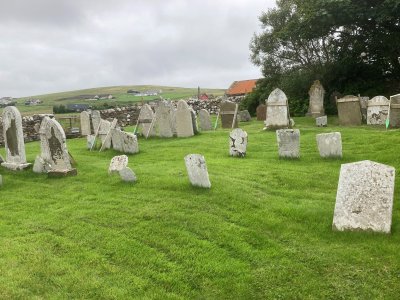
Mary Nicolson died two months later, on 12th December 1860, and lies buried somewhere in Aith old cemetery. Other stones from this period indicate the likely area where she was laid to rest, but there is now nothing to mark her grave.

